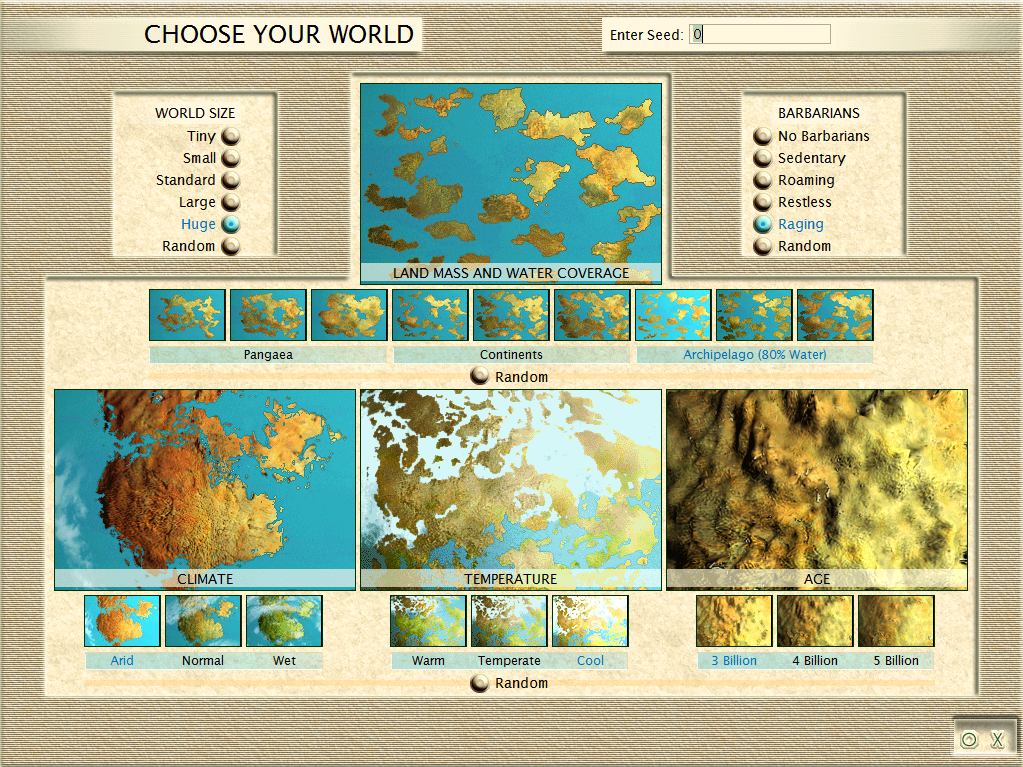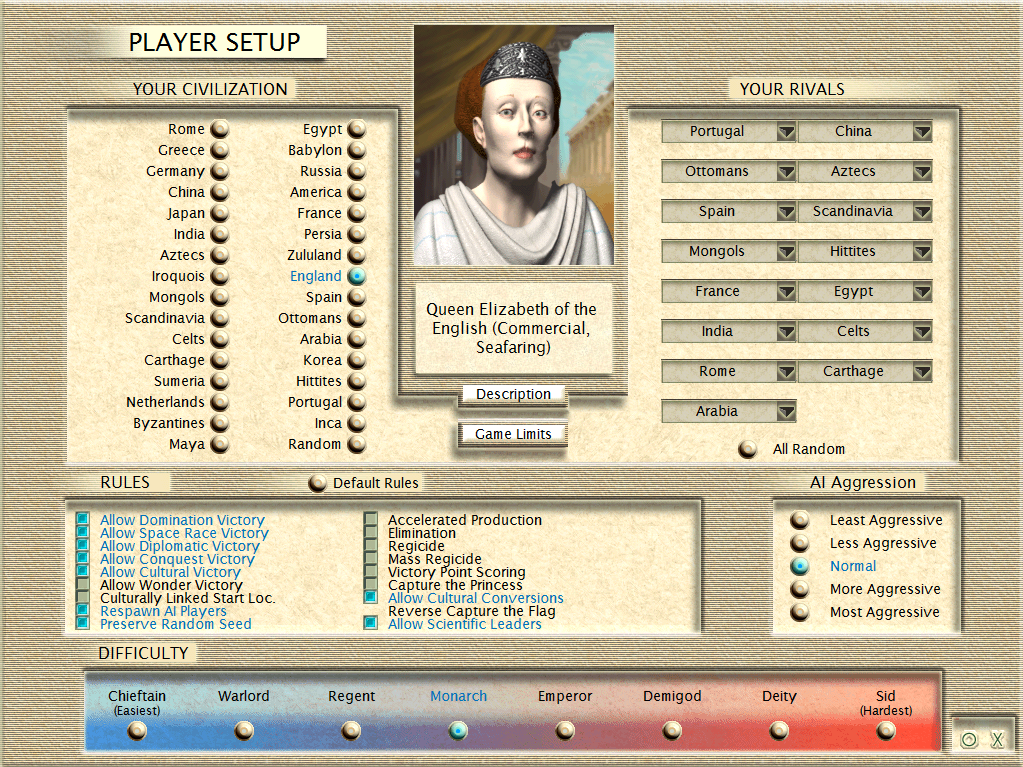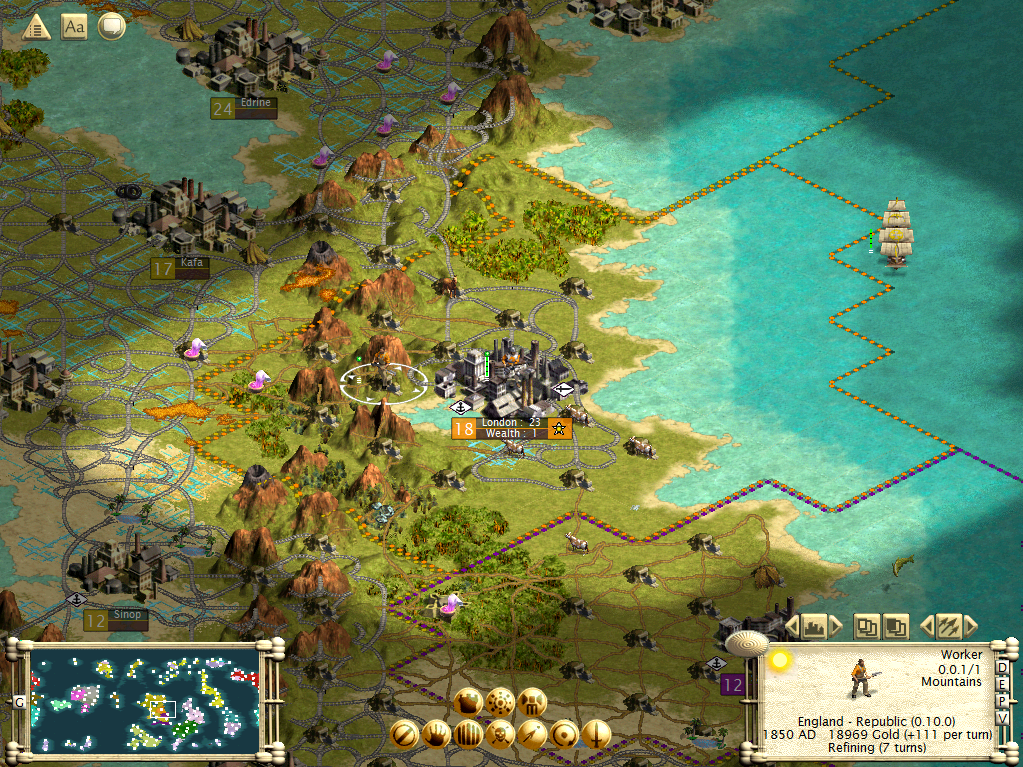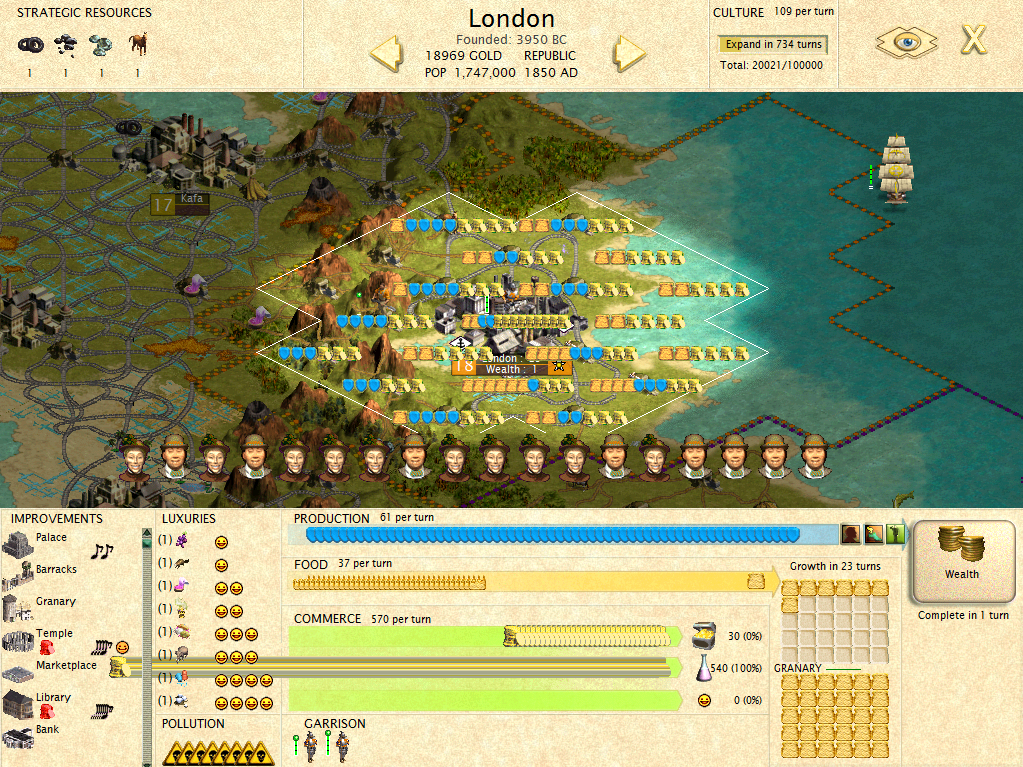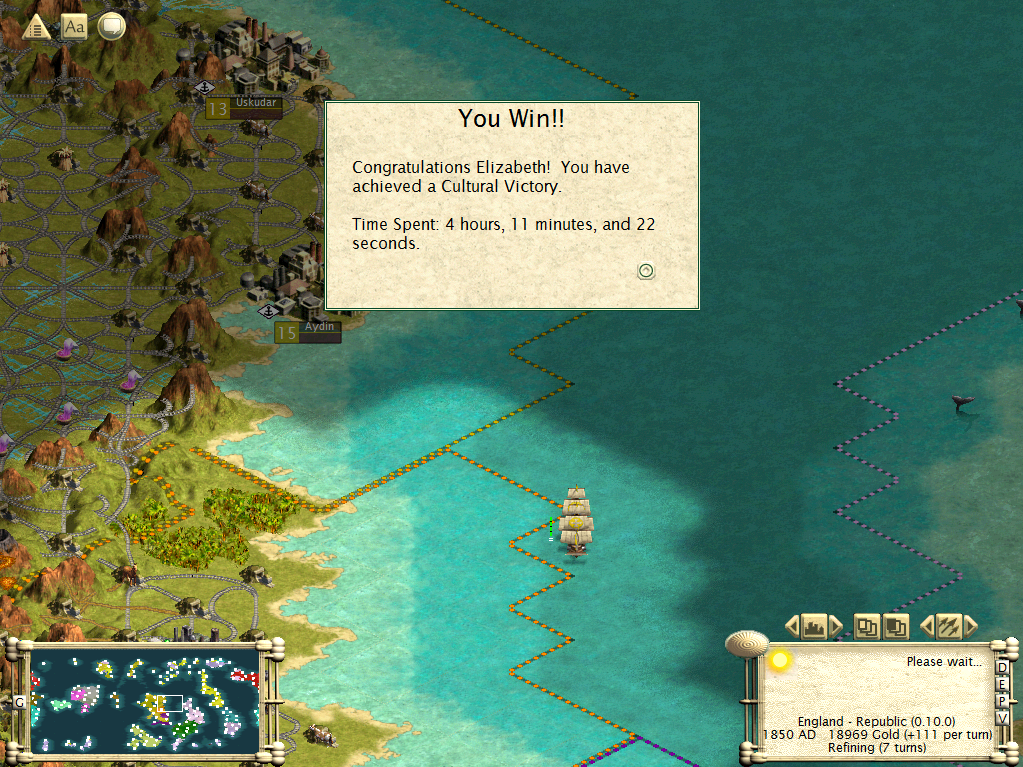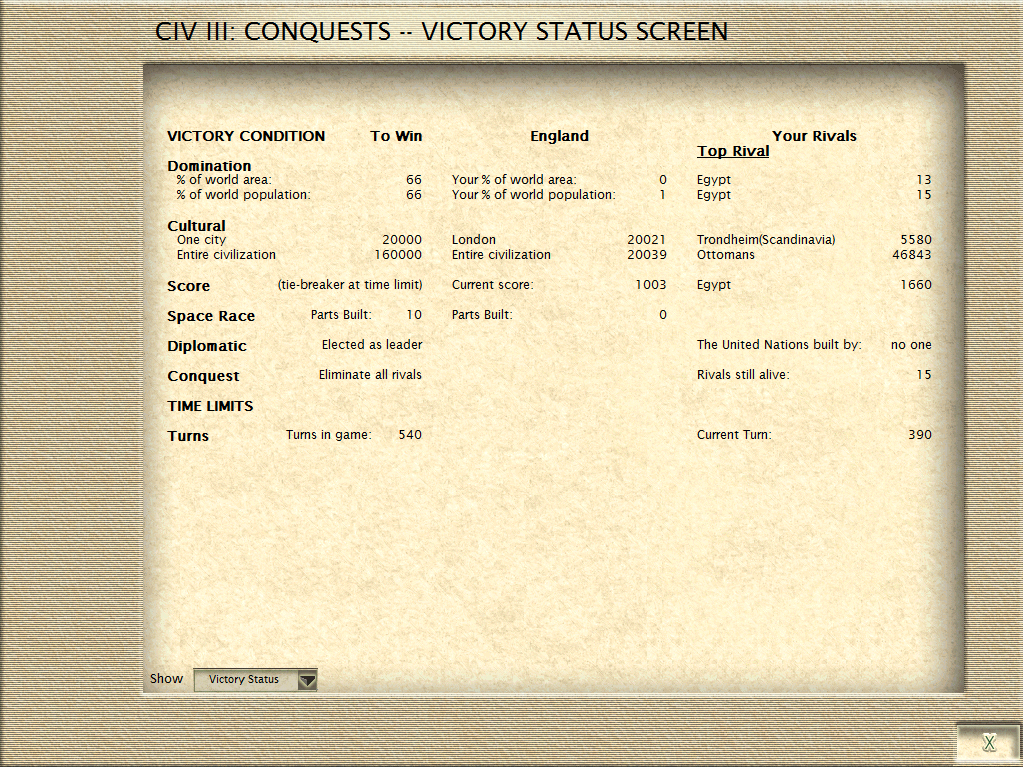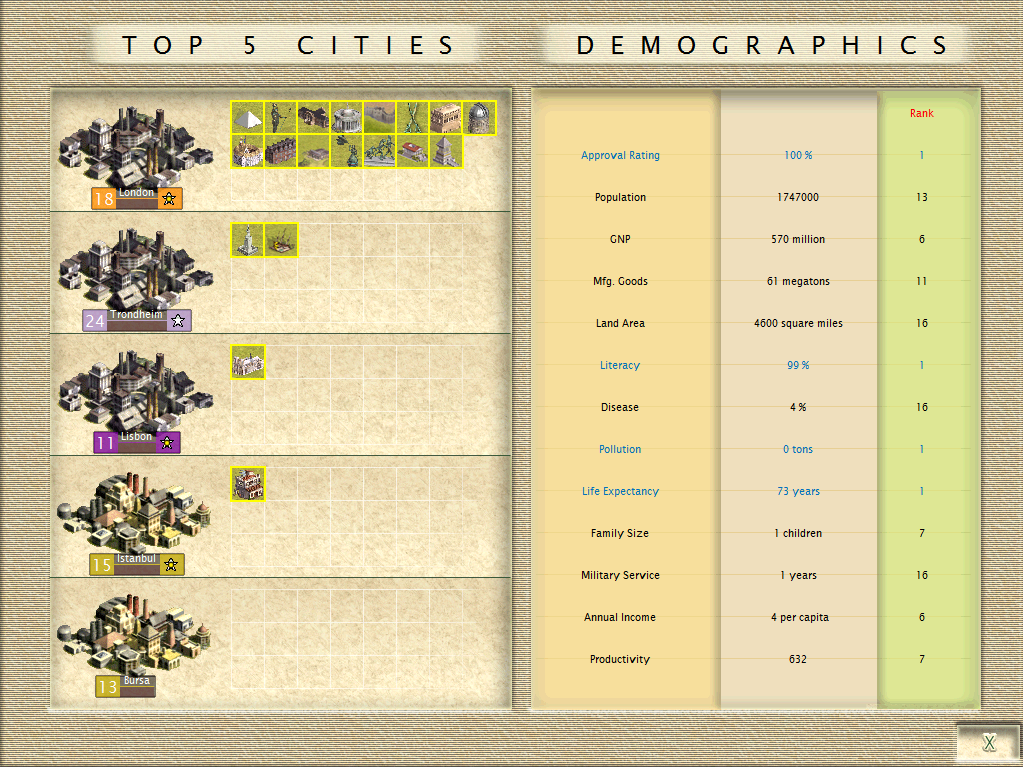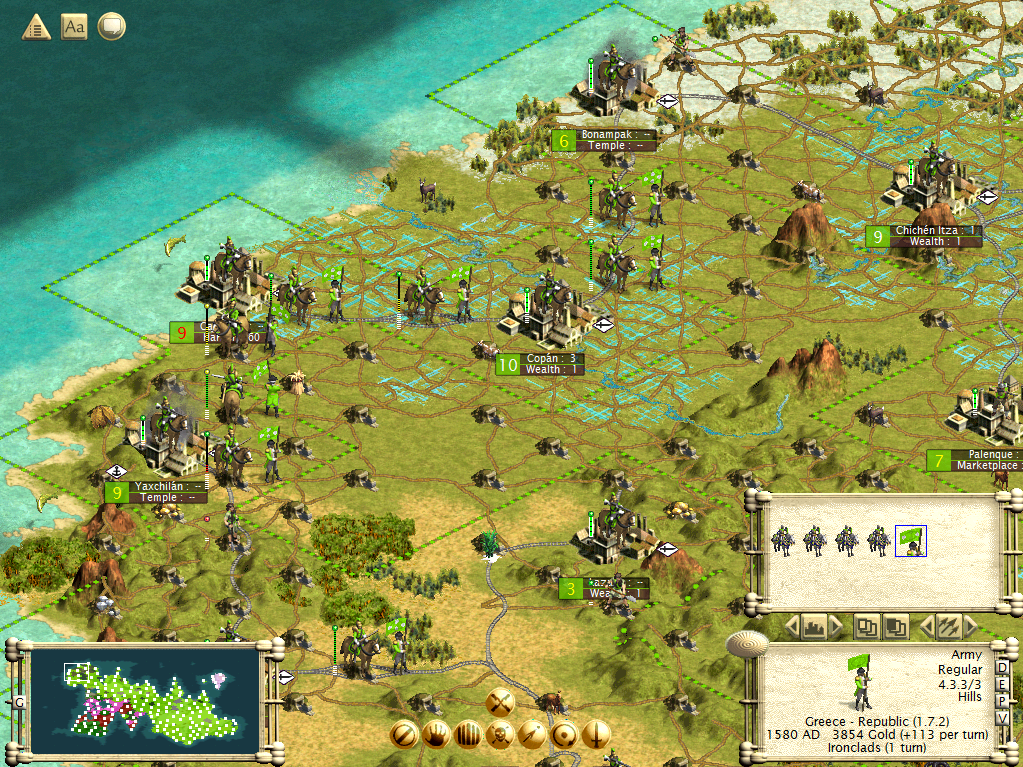As long as it's cheaper to fund a new city than conquoring a neighbouring one, early game will always be about securing the most clay to grow into.
CivIV was the closest we had to a working model. The best way to discourage city spam is to make each one drain resources and require a strong investment for a period of time before becoming self-sufficient. That way, a small but ambitious kingdom can take a slice out of someone who expands too fast. But if that was easy to balance, someone would've done it by now.
Doesn't help that 90% of the audience doesn't give a crap either.
Or more effective than developing the one you got.
there is certainly ways around this.
Whats the problem with rapid expansion that it mus be prevented?
It becomes a problem if it's the only valid earlygame strategy, like in civ 3. Civ 5 has the opposite problem: there's no reason to expand past three or four cities. Civ 4 hit the middle ground perfectly.
Exactly. Civ 3 was ICS galore.
Everything shown with 6' so far seems to be going in right direction, even the Civ 4 composer returning.
Meanwhile, Warlock and Endless Legend totally didn't shoplift all of the basics of gameplay from Civilization series.
That's always been the key in every Civ game. They only changed it in V. In fact they went waaaaaay overboard. And so did other 4X games. Case in point: Endless Space. Have more than 2 planets and suddenly everyone is mad as hell and not gonna take this anymore.
I suppose I am in the minority here but that endless city spam bores the hell out of me, it makes the game feel like a grand strategy blobber , which it shouldn't be. I actually prefer how Civ V did it, and very much so.
Wtf is a grand strategy blobber? That makes no sense.
I phrased that awkwardly, I just meant the usual map painting in grand strategy games, where all you do is expanding for the sake of expanding. Its sometimes referred to as 'blobbing'.
Wtf are you guys even talking about? Manic pace of expansion? This only applied in Civ3, and even then only because the AI would otherwise happily waltz through your lands to plop down a city on that tiny three tile mountain area not yet within your borders.
And ... I think since Civ2 or one of it's rereleases you had the option of playing on a smaller map for a quicker paced game with less cities.
Even Civ5 wouldn't have scaled down cities so much if not for the fact that to make their oh so glorious 1UPT in a global strategy game idea work they had to make sure FAR less units were being produced and on the map. Thus less cities and less production in general.
On the Civ 1 cover it said: Build an empire to stand the test of time. Empire. You know, like the Roman Empire. Or the British Empire. Or the Ottoman Empire. Or ... you get the point. Those had more than three cities, you know. Seriously. Read it up on wikipedia. Fascinating stories...
All these experts and not one person mentions that in Civ2 infinite city spam is NOT required and is also NOT required in Civ3.
In Civ2 you can use technology to out-perform other civs and so can operate a relatively smallish empire and just hose down everyone else when you feel your military is advanced enough. The 'infinate' city spam for me would be 5-10 cities only, on a relatively big map.
In civ3 you can win the game with just one city, even on a huge map with lots of rivals:
Now, I have a lot of issues with Civ2 and 3, but it never ceases to amaze me how often people go rancid disgusted about stuff that's just complete bollox if they spent a minute or two experimenting instead of blindly following either the herdspeak or base their entire gameplay on the advice of some "I only play at Sid level and quit if I haven't won by 500BC" type civ junky.
The key word for civ games should be the title that headed the first screeny displayed here: "Choose Your World". Practically any favoured personal choice way-to-play can be achieved with the old civs, that's what made them great. I have never abused "Infinite City Spam" in any civ game and have had no real trouble playing them how I want to play them, nor even getting good scores and early wins:

I had about 7 or 8 cities for this win on a slightly smaller map but a Pangaea. The stacks of doom are present and correct, but they're not hideous stacks, maybe 12 apiece or something, maybe 20 apiece, it's no real biggy, the expression of power is adequately represented with not too much clicking, but this is irrelevant anyway, because in Civ3 you don't normally have stacks of doom, you normally have armies, which are single pieces that function in the same way Civ2 used power-piece battle mechanics (Civ3 is sadly some obscure overly random RNG which sucks balls like something that sucks a lot of balls):
There are only about 10 units in open play here, any excess is just for using as military police in newly conquered cities. Again, I just had about 8-10 cities as my base empire before I conquered a single city.
So what my complaint has been from IV onwards is not bitching about what is your own fucking choice of how you want to play, but rather that newer Civs remove choices in how you want to play and 'force' you to play in a way that 'some' people prefer - instead of those people learning how to choose their fucking game better in the old systems...







